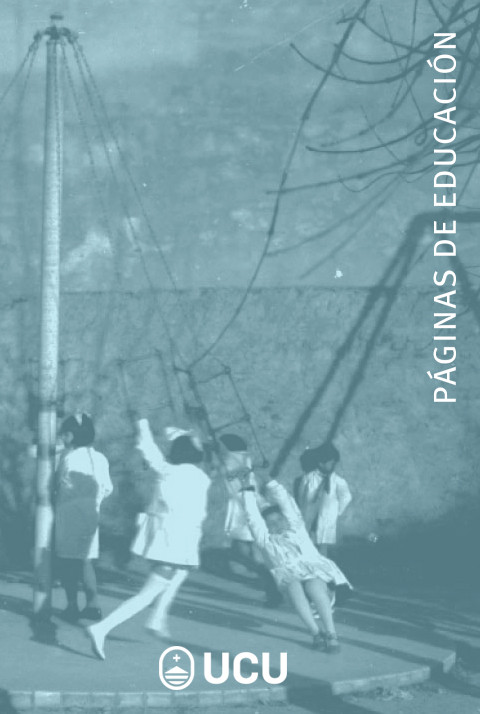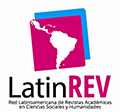The E-books and Students’ Mathematics Performance: A Qualitative Systematic Review
DOI:
https://doi.org/10.22235/pe.v17i2.3479Keywords:
e-Book, mathematics, learning, student performanceAbstract
This research explores the impact of digital books on student’s performance in mathematics. The theoretical arguments of this research are based on the self-regulated learning theory. To employ the complete research strategy, 65 papers were retrieved in the first round of research, including 30 from ERIC, 20 from Science Direct, and 15 from EBSCO. Following that, only 40 papers produced findings from the major section screening. The article’s systematic literature review and thematic analysis of the published material resulted in a sample size of 23 articles for this study. A qualitative thematic analysis Software, NVivo 12, was used to evaluate qualitative data. The findings indicated that motivation, technological advancement, information technology, learning objectives, sources for digital application, challenges of technology, traditional learning style and visual information have a significant collision with students’ mathematical learning.
Downloads
References
Abdul Karim, S. K. (2011). The effectiveness of individual self-learning computer-simulated and electronic book in the development of innovative thinking among Science students in second year, Faculty of Education, Sultanate of Oman (experimental study). Journal of the Faculty of Education, University of Assiut, 27(2), 79-88. https://doi.org/10.46827/ejoe.v6i1.3570
Al-Astal, H. & Zaydah, A. (2015). The effectiveness of an E-book on developing mathematical thinking skills and acquisition of mathematical concepts among 5th graders in Gaza. International Journal of Computer Application, 166(21), 23-29. http://doi.org/10.5120/20461-2824
Alshehri, S. (2021). Effectiveness of E-Book in Improving Academic Performance and Attitudes toward Mathematics. Journal of Mathematics Education, 4(24), 1-35. https://doi.org/10.21608/armin.2021.163301
Amalia, R., Fadilah, F., Komarudin, M., & Kusuma, J. W. (2021). Development of Mathematics E-Books in Improving Mathematical Literacy and Entrepreneurial Spirit. AL-ISHLAH: Jurnal Pendidikan, 13(3), 2425-2434. https://doi.org/10.35445/alishlah.v13i3.987
Bagheri, M., Ali, W. Z. W., Abdullah, M. C. B., & Daud, S. M. (2013). Effects of project-based learning strategy on self-directed learning skills of educational technology students. Contemporary educational technology, 4(1), 15-29. https://doi.org/10.30935/cedtech/6089
Berg, S. A., Hoffmann, K., & Dawson, D. (2010). Not on the Same Page: Undergraduates’ Information Retrieval in Electronic and Print Books. The Journal of Academic Librarianship, 36(6), 518-525. https://doi.org/10.1016/j.acalib.2010.08.008
Bienkowski, M., Feng, M., & Means, B. (2012). Enhancing Teaching and Learning through Educational Data Mining and Learning Analytics: An Issue Brief. Office of Educational Technology, US Department of Education, 1-60.
Bloom, B. S., Engelhart, M. D., Furst, E., Hill, W. H., & Krathwohl, D. R. (1956). Taxonomy of Educational Objectives: The Classification of Educational Goals. Handbook 1: Cognitive Domain. New York: David McKay.
Booth, A., Sutton, A., & Papaioannou, D. (2016). Systematic approaches to a successful literature review (2nd ed.). Sage.
Bourdieu, P. (1986). The Forms of Capital. In J. Richardson (Ed.), Handbook of theory and Research for the Sociology of Education (pp. 241-58). New York: Greenwood.
Braun, V., & Clarke, V. (2006). Using thematic analysis in psychology. Qualitative research in psychology, 3(2), 77-101. https://doi.org/10.1191/1478088706qp063oa
Butler, D. (2002). Individualizing instruction in self-regulated learning. Theory into Practice, 41, 81-92. https://doi.org/10.1207/s15430421tip4102_4
Chesser, W. D. (2011). The e-textbook revolution. Library technology reports, 47(8), 28-40.
Connell, C., Bayliss, L., & Farmer, W. (2012). Effects of eBook readers and tablet computers on reading comprehension. International Journal of Instructional Media, 39(2).
Del AmoDel-, I. F., Erkoyuncu, J. A., Roy, R., Palmarini, R., & Onoufriou, D. (2018). A systematic review of Augmented Reality content-related techniques for knowledge transfer in maintenance applications. Computers in Industry, 103, 47-71. https://doi.org/10.1016/j.compind.2018.08.007
Dinsmore, D., Alexander, P., & Loughlin, S. (2008). Focusing the conceptual lens on metacognition, self-regulation, and self-regulated learning. Educational Psychology Review, 20, 391-409. https://doi.org/10.1007/s10648-008-9083-6
Gonçalves, E., Castro, J., Araújo, J., & Heineck, T. (2018). A systematic literature review of istar extensions. Journal of Systems and Software, 137, 1-33. https://doi.org/10.1016/j.jss.2017.11.023
Groff, J., & Mouza, C. (2008). A framework for addressing challenges to classroom technology use. AACE Review (Formerly AACE Journal), 16(1), 21-46.
Helsa, Y. & Kenedi, A. (2019). Edmodo-based blended learning media in learning mathematics. Journal of teaching and learning in elementary education, 2(2), 107-117. https://doi.org/10.33578/jtlee.v2i2.7416
Hillmayr, D., Ziernwald, L., Reinhold, F., Hofer, S., & Reiss, K. (2020). The potential of digital tools to enhance mathematics and science learning in secondary schools: a context-specific meta-analysis. Computers & Education, 153, 103897. https://doi.org/10.1016/j.compedu.2020.103897
Jeong, H. (2012). A comparison of the influence of electronic books and paper books on reading comprehension, eye fatigue, and perception. The Electronic Library, 30(3), 390-408. https://doi.org/10.1108/02640471211241663
Johnston, M. P. (2017). Secondary data analysis: A method of which the time has come. Qualitative and quantitative methods in libraries, 3(3), 619-626.
Komba, W. (2009). Increasing education access through open and distance learning in Tanzania: A critical review of approaches and practices. International Journal of Education and development using ICT, 5(5), 8-21.
Kopcha, T. J. (2012). Teachers’ perceptions of the barriers to technology integration and practices with technology under situated professional development. Computers & Education, 59(4), 1109-1121. https://doi.org/10.1016/j.compedu.2012.05.014
Korat, O., & Or, T. (2010). How New Technology Influences Parent—child Interaction: The Case of e-book Reading. First Language, 30(2), 139-154. https://doi.org/10.1177/0142723709359242
Knoke, D., & Yang, S. (2020). Social network analysis. SAGE Publications, Inc. https://doi.org/10.4135/9781506389332
Lim, B., Liu, L., & Choo, C. (2020). Investigating the effects of interactive E-book towards academic achievement. Asian Journal University Education, 16(3), 78-88. https://doi.org/10.24191/ajue.v16i3.10272
Losbichler, H., & Lehner, O. M. (2021). Limits of artificial intelligence in controlling and the ways forward: a call for future accounting research. Journal of Applied Accounting Research, 22(2), 365-382. https://doi.org/10.1108/JAAR-10-2020-0207
Dado, V., Dapar, Z., Idol, F., Jandayan, C., Niderost, N., & Mahinay, R. B. (2016). Acceptability of E-Books for Academic Use Among Students and Teachers at Mindanao University of Science and Technology. [Thesis for BS Technology Communication Management, Department of Education of the Philippines].
Martinez-Harms, M. J., Bryan, B. A., Balvanera, P., Law, E. A., Rhodes, J. R., Possingham, H. P., & Wilson, K. A. (2015). Making decisions for managing ecosystem services. Biological Conservation, 184, 229-238. https://doi.org/10.1016/j.biocon.2015.01.024
McNiff, K. (2023, December 22). What is Qualitative Research? Lumivero. https://lumivero.com/resources/what-is-qualitative-research/
Mengist, W., & Soromessa, T. (2019). Assessment of forest ecosystem service research trends and methodological approaches at global level: a meta-analysis. Environmental Systems Research, 8(1), 1-18. https://doi.org/10.1186/s40068-019-0150-4
Mortelmans, D. (2019). Analyzing qualitative data using NVivo. In The Palgrave handbook of methods for media policy research (pp. 435-450). Palgrave Macmillan, Cham.
Mudaly, V. & Fletcher, T. (2019). The effectiveness of geogebra when teaching linear functions using the iPad. Problems of Education in the 21st Century, 77(1), 55-81. https://doi.org/10.33225/pec/19.77.55
Pardede, P. (2019). Print vs. Digital Reading Comprehension in EFL. Journal of English Teaching, 5(2), 77-90. https://doi.org/10.1111/bjet.13014
Paris, S. & Paris, A. (2001). Classroom applications of research on self-regulated learning. Educational Psychology, 36, 89-101. https://doi.org/10.1207/S15326985EP3602_4
Perevochtchikova, M., Flores, J. Á. H., Marín, W., Flores, A. L., Bueno, A. R., & Negrete, I. A. R. (2019). Systematic review of integrated studies on functional and thematic ecosystem services in Latin America, 1992–2017. Ecosystem Services, 36, 100900. https://doi.org/10.1016/j.ecoser.2019.100900
Pintrich, P. R. (2000). The role of goal orientation in self-regulated learning. In Handbook of self-regulation (pp. 451-502). Academic Press.
Richards, T. (2002). An intellectual history of NUD*IST and NVivo. International Journal of Social Research Methodology, 5(3), 199 214. https://doi.org/10.1080/13645570210146267
Saldaña, J. (2021). The coding manual for qualitative researchers. Sage.
Santoso, T., Siswandari, S., & Sawiji, H. (2018). The effectiveness of eBook versus printed books in the rural schools in Indonesia at the modern learning era. International Journal of Educational Research, 3(4), 77-84. https://doi.org/10.24331/ijere.453512
Segal-Drori, O., Korat, O., Shamir, A., & Klein, P. S. (2009). Reading electronic and printed books with and without adult instruction: effects on emergent reading. Reading and Writing, 23(8), 913-930. https://doi.org/10.1007/s11145-009-9182-x
Shepperd, J. A., Grace, J. L., & Koch, E. J. (2008). Evaluating the electronic textbook: Is it time to dispense with the paper text? Teaching of psychology, 35(1), 2-5. https://doi.org/10.1080/00986280701818532
Smetana, L. K., & Bell, R. L. (2012). Computer simulations to support science instruction and learning: A critical review of the literature. International Journal of Science Education, 34(9), 1337–1370. https://doi.org/10.1080/09500693.2011.605182
Suarez, M. F., & Woudhuysen, H. R. (2013). The Book: A Global History. OUP Oxford.
Ulum, H. (2022). The effects of online education on academic success: A meta-analysis study. Educ Inf Technol (Dordr), 27(1), 429-450. https://doi.org/10.1007/s10639-021-10740-8
Walkington, C., & Bernacki, M. L. (2020). Appraising research on personalized learning: Definitions, theoretical alignment, advancements, and future directions. Journal of Research on Technology in Education, 52(3), 235-252. https://doi.org/10.1080/15391523.2020.1747757
Wijaya, T., Cao, Y., Weinhandl, R. Tamur, M. (2022). A meta-analysis of the effects of E-books on students’ mathematics achievement. Heylion, 8(6), 1-9. https://doi.org/10.1016/j.heliyon.2022.e09432
Wijaya, T., Zhou, Y., Ware, A., & Hermita, N. (2021). Improving the Creative Thinking Skills of the Next Generation of Mathematics Teachers Using Dynamic Mathematics Software. International Journal of Emerging Technologies in Learning (iJET), 16(13), 212-226. https://doi.org/10.3991/ijet.v16i13.21535
Woody, W. D., Daniel, D. B., & Baker, C. A. (2010). E-books or textbooks: Students prefer textbooks. Computers & Education, 55(3), 945-948. https://doi.org/10.1016/j.compedu.2010.04.005
Yang, K., & Meho, L. I. (2006). Citation analysis: a comparison of Google Scholar, Scopus, and Web of Science. Proceedings of the American Society for information science and technology, 43(1), 1-15. https://doi.org/10.1002/meet.14504301185
Zamawe, F. C. (2015). The Implication of Using NVivo Software in Qualitative Data Analysis: Evidence-Based Reflections. Malawi Medical Journal, 27(1), 13-15. https://doi.org/10.4314/mmj.v27i1.4
Zimmerman, B. J., & Schunk, D. H. (Eds.). (2001). Self-regulated learning and academic achievement: Theoretical perspectives. Routledge.
Zou, S., Tang, J., & Pereira, J. (2022). Integrating hawgent dynamic mathematics software into cone volume geometry learning in elementary school. Journal of Teaching and Learning in Elementary Education, 5(1), 1-10. https://doi.org/10.33578/jtlee.v5i1.7903
Downloads
Published
How to Cite
Issue
Section
License
Copyright (c) 2024 Páginas de Educación

This work is licensed under a Creative Commons Attribution 4.0 International License.















